You’re finally about to embark on that vacation you’ve been waiting for all year — but what about all of those precious plants you’re leaving behind? After all, you didn’t spend all that time nurturing them only to have them die when you leave the house for a few days. While enlisting a friend as plant sitter is certainly an option, it doesn’t always work out. So, what can you do to ensure your flora keeps on thriving in your absence?
Here are 10 foolproof ways to take care of your plant babies while you’re off relishing every moment of your dream vacay.
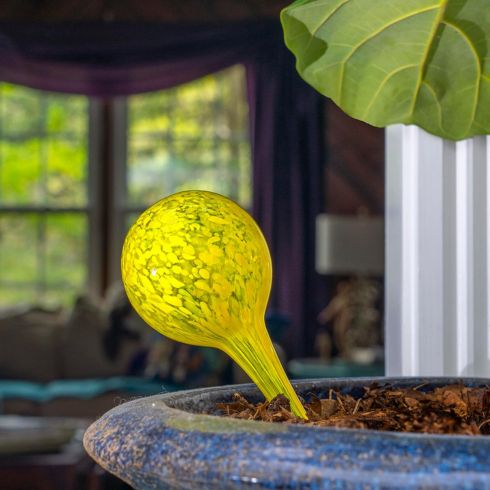
Self-Watering Bulbs
Add a pop of colour with glass-blown self-watering bulbs that will keep your little indoor garden looking lush. The night before you leave for your vacay, fill the globe with water and stick the thin spike into the soil so it can gradually release water to your plants. Voila! Bonus: these gems are tinted in eye-popping colours (and fun shapes), adding extra personality to the room.
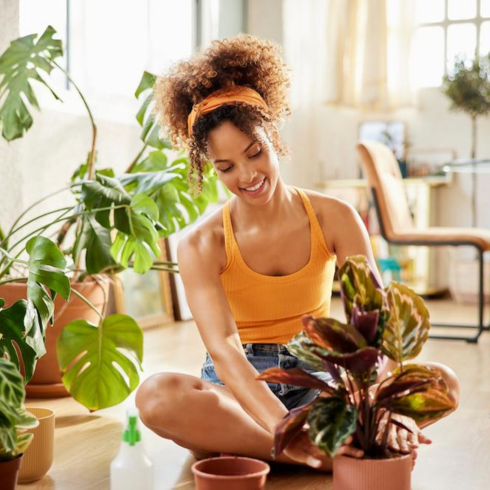
Play Around With Light
When plants receive too much light, they photosynthesize faster and require water more quickly. By moving them away from direct sunlight, or factors such as the furnace/AC, will help them stay moist for longer. When you return home, move them back to their original places.
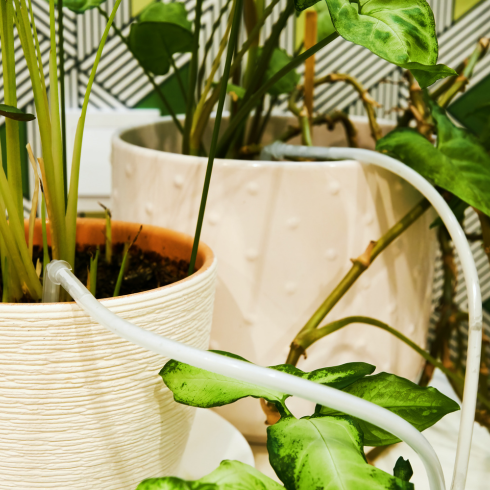
Automatic Irrigation Drip System
Our motto? Set it, and forget it. Put a timer on your irrigation drip system so that your plants get water at the same time every day (or every other day).
For outdoor plants, if you don’t have an irrigation drip system, you can set a timer on your sprinkler. Early morning or after sunset are best, as this will help reduce evaporation. You can also use a rain barrel. Attach a soaker hose and run it throughout your garden so that the water slowly seeps into the soil.
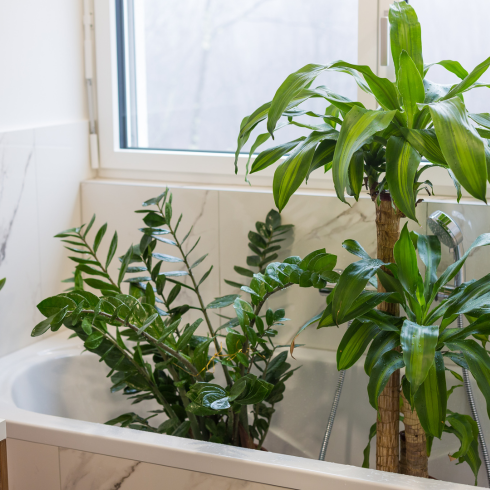
Use the Sink or Bathtub
Move your beloved plant babies into the bathroom (ideally, one with a window providing some natural light). Bathrooms will help retain moisture and humidity longer. To make things easier, you can line up all your plants in the tub. Simply fill the sink or bathtub with a couple inches of water and place a towel along the bottom — this will help your plants absorb the water slowly.
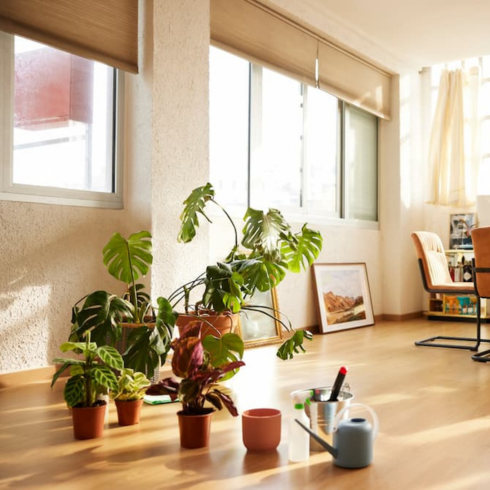
Tweak the Temperature
Move any potted outdoor plants into the shade before leaving and rearrange your indoor space so that your plants are set away from windows and any vents that will blast cold (or hot) air onto them.
Instead of running up your electric bill, keep things warm enough for your plants by opening up blinds while you’re away. The natural light should be enough to help your plants thrive. Bonus: this will make your house more energy efficient, which is never a bad habit to start!
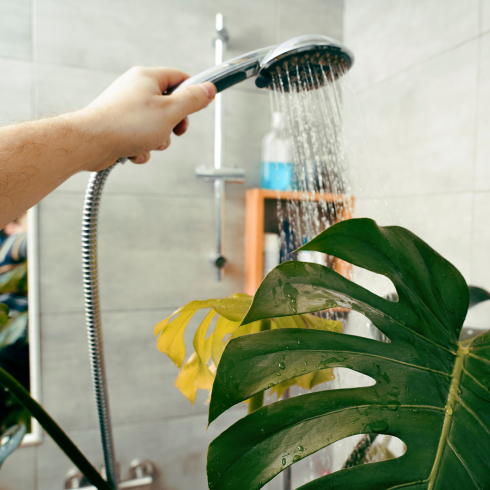
Plant Shower
Not keen on letting your plants hang out in the shower while you’re away? If you’re only going to be gone for about a week, opt for a little plant shower instead. Drench the soil in the bathtub until the water literally runs out of the drainage holes in your pot. Then, repeat it one more time, ensuring that all of the soil is thoroughly wet. Once that’s done, simply place your plants back on their designated trays or saucers throughout your house. They should retain the moisture for about one week.
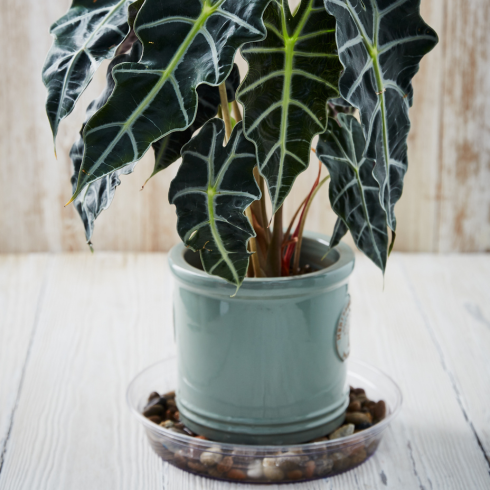
Put Out Trays of Water (and Add Pebbles!)
Laying out trays of water throughout your home will help raise moisture levels and prevent your plants from drying out while you’re on vacay. For more direct contact, add pebbles or rocks to the tray and place your potted plant directly on top — helping them stay hydrated without running the risk of overwatering.
Related: How to Rescue Dying Houseplants
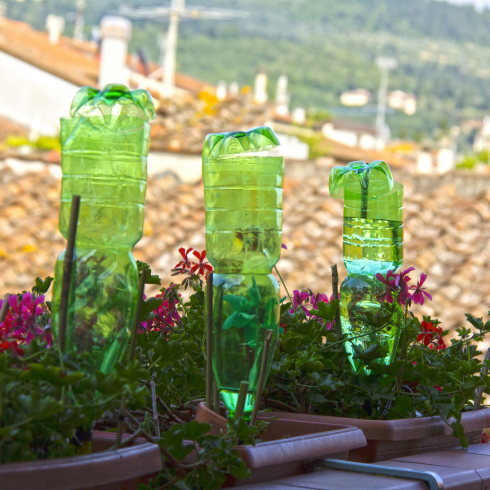
Fill a Bottle With Water
Fill a wine bottle (or plastic bottle) with water, dig a small hole in the soil and stick the bottle upside down in the hole. When the soil in the pot dries out, the water in the bottle will slowly be absorbed by the soil, keeping your plants refreshed and hydrated while you’re sprawled on a beach.
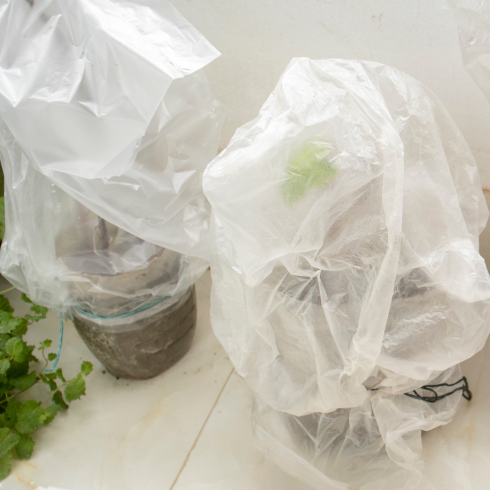
Go for the Greenhouse Effect
If you plan to be away from home for longer than a week, this might be your best option. Water your plant and then cover it with a plastic bag, just below the lip of the planter. That’s right — it’s a DIY greenhouse. Heads up: you might have to set aside some sticks or toothpicks to prevent the bag from touching the leaves.
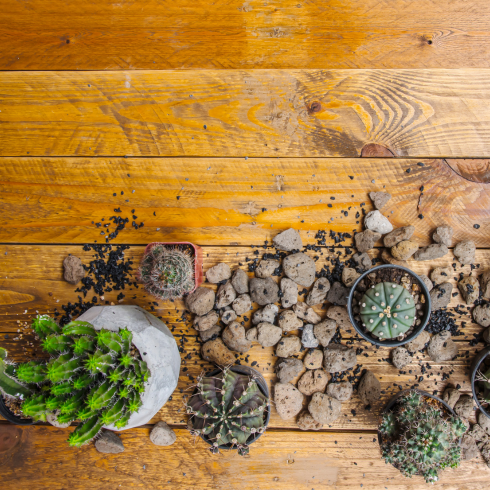
Add Mulch, Wood Chips or Lava Rocks
Applying mulch, wood chips or lava rocks is a great way to conserve water since it locks in moisture and reduces evaporation. Give the soil around your plants a good soaking and then apply the mulch or wood chips to keep it moist. This should keep your plants hydrated for a week or so.
HGTV your inbox.
By clicking "SIGN UP” you agree to receive emails from HGTV and accept Corus' Terms of Use and Corus' Privacy Policy.




